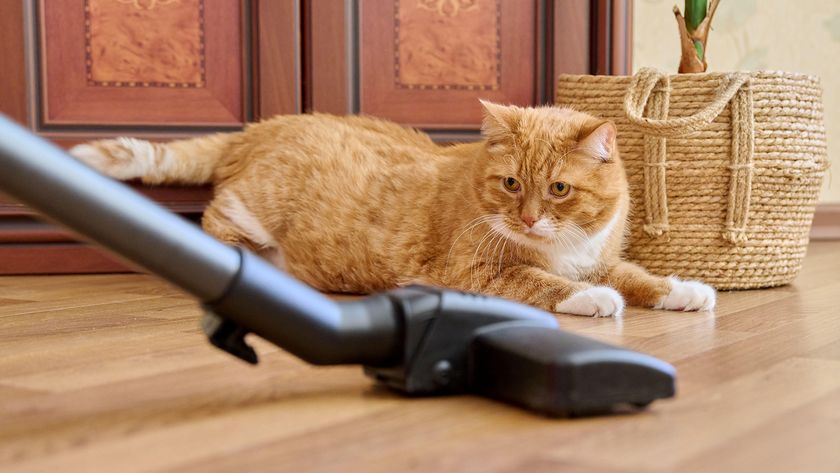What is TNR (trap-neuter-return) and how you can help out stray cats
What is TNR? The method helps regulate and save stray cat populations

What is TNR? TNR stands for 'trap-neuter-return', and it's the most effective and humane way to manage feral and stray cat populations.
Stray or feral cats typically live together in large colonies, and they're often fed by kind locals who catch them looking around for food. Other people, however, find them to be a nuisance, and can resort to cruel tactics in order to rid their neighborhoods of stray and feral cat populations. While people in some parts of the world have indoor/outdoor cats, in many places it's often incredibly unsafe for cats to be outside, and stray cats are no exception.
If you've lived in a city where there seems to be an endless amount of stray cats running around, there's probably already a TNR program in effect in your area. It helps to keep stray and feral populations controlled, and the members of those colonies relatively safe and healthy for the rest of their lives.
You can and should help your local cat colonies and your neighborhood by getting involved in TNR. Helping stray cats is a fantastic cause, and one with many glorious returns. Here's all you need to know about TNR.
The TNR basics
Volunteers will set humane traps near local colonies, then bring those trapped cats to a veterinarian in order to be spayed or neutered, vaccinated, and eartipped. Eartipping is a universal, globally-recognized sign of a feral or stray cat who has been altered – a small tip of the ear is cut in a straight line, removing the little pointy bit. This procedure is performed while the cat is being spayed or neutered, and it heals fast and easily in the wild.
Eartipping makes it very easy for volunteers to recognize whether a cat has already been altered, preventing them from wasting time trying to catch a cat that's already been neutered or spayed.
Providing TNR services for local colonies means the cats can no longer reproduce, so the size of the colony has a chance to decline naturally over the years. But spaying and neutering also helps reduce behavior that can harm cats – specifically fighting, attempted mating, or marking territories (yes, the smell from unaltered males will go away if the entire colony is fixed). Plus, diseases are less likely to spread if they've all been vaccinated, and members of the colony are less likely to roam far and wide to find a mate.
PetsRadar Newsletter
Get the best advice, tips and top tech for your beloved Pets
Sometimes, feral cat who have been TNR-ed can adapt well to indoor life, and can be kept by volunteers or adopted out.
How to get involved in TNR
Some cities offer free TNR classes that will give you official TNR certification after completing the class. Animal Alliance NYC is a great place to go if you live in the New York City metro area. If you live elsewhere, check out NeighborhoodCats.org for a handbook on how to get started – including how to successfully set a trap and mass trap colonies.
From there, it's all about getting to know your neighborhood cats – and people, too. Hand out TNR pamphlets to community members, and ask them where they've seen stray cats. Often enough, you'll find colonies in backyards, parking lots, construction sites, or in large dumpsters. Assure community members that you can help them with colonies that they may be concerned with, and try and recruit feeders and volunteers to help with trapping.
The five steps of TNR
Once you feel confident and ready to help your community cat colony, just follow these steps as laid out by Neighborhood Cats in order to safely and effectively TNR your local kitties.
1. Establish a feeding schedule
You'll want to get the colony you're about to trap on a regular feeding schedule that's as consistent as possible. If you keep putting food out the cats will get used to a schedule, and they'll show up consistently – which is important when you're getting ready to trap. During the feeding period, count the cats and keep an eye out for any who may be especially sick, or for young kittens who aren't yet old enough to be considered fully feral (which means they'll adjust easily in a home).
Set up feeding stations and shelters, which are extremely important during cold months. Head here to see how to make an easy DIY outdoor cat shelter out of a storage container.
2. Find a holding space
You'll need about two to three days to effectively trap multiple cats in a colony – whether you're trying to get the entire colony at once or just a few at at time.
After you've trapped them, you'll need a few days for post-surgical recovery – female cats need 48-72 hours of recovery, as their surgery is more invasive, while male cats can be returned to the colony 24 hours after surgery. That's why you'll need a holding space where you keep the cats confined in their traps, usually with a towel or blanket over them so that they remain calm. The holding space should be warm and dry and inaccessible by strangers or other animals. If you have a house, garages and basements are great, but if you're in the city and only have an apartment, I know several TNR members who have used their bathrooms or office spaces.
3. Arrange for the procedure and transportation
Get an idea of how many cats you'll be sending for TNR, and find a spay/neuter provider that offers low-cost procedures. In some areas, TNR-certified volunteers can get strays spayed, neutered, and vaccinated at a discount. Head here to find low cost/spay neuter providers in your area. Schedule appointments for the procedures and reserve traps and whatever other equipment you'll need. There are trap banks and local rescues that can provide traps for you.
You'll also need to get some transportation to and from the clinic, and probably some volunteers to help (especially if there are multiple cats).
4. Trap!
Set up traps at the feeding location, and withhold food from the colony for 24 hours before trapping. That means when you set up food in the traps, they'll be eager to get in! If you don't withhold food, even if you set up the traps and make the appointments, the cats may not go into the traps!
Transport the trapped cats to the veterinarian, then bring them to the holding space to recover. Use their recovery time to catch any other cats you may have missed in the colony – it's a lot easier to trap the other cats with less felines running around! When they've fully recuperated, you can return them to their territory.
5.Colony caretaking
A photo posted by @astoria_cats_tnr on Jun 10, 2020 at 3:39pm PDT
The cats will return to their colonies and quickly adopt their regular routines. Your job is to help maintain that colony by providing regular food and shelter and keeping the neighborhood people happy with their feline friends. Also make sure you're aware of any newcomers – sometimes other feral may join an existing colony or, sadly, an abandoned cat will become a stray and join your colony.
Can you adopt a cat that has been TNR-ed?

Truthfully, it depends. If a stray cat is friendly, it can easily be rescued and adopted out to a lovely new home. In the case of my cat, Radgie, he was found as a kitten before he had a chance to become fully feral, and was easily identified as an adoptable cat (that's why his ear was never clipped, as you can see above).
For older cats, it's all about paying close attention to them during trapping, transport, and recovery. Some cats may be friendly, while others will hiss and swat at you even from inside the trap. Pay close attention to them, and reference the work of cat behaviorists like Jackson Galaxy to see what signs point to a friendly cat. Consult local rescues if you think you have a friendly cat and want to work out a fostering situation.
Sometimes stray cats are actually former pets who were sadly abandoned by their families, and can easily be re-integrated into a home. You'll be able to tell almost immediately if a cat is a former pet and can be re-homed.













